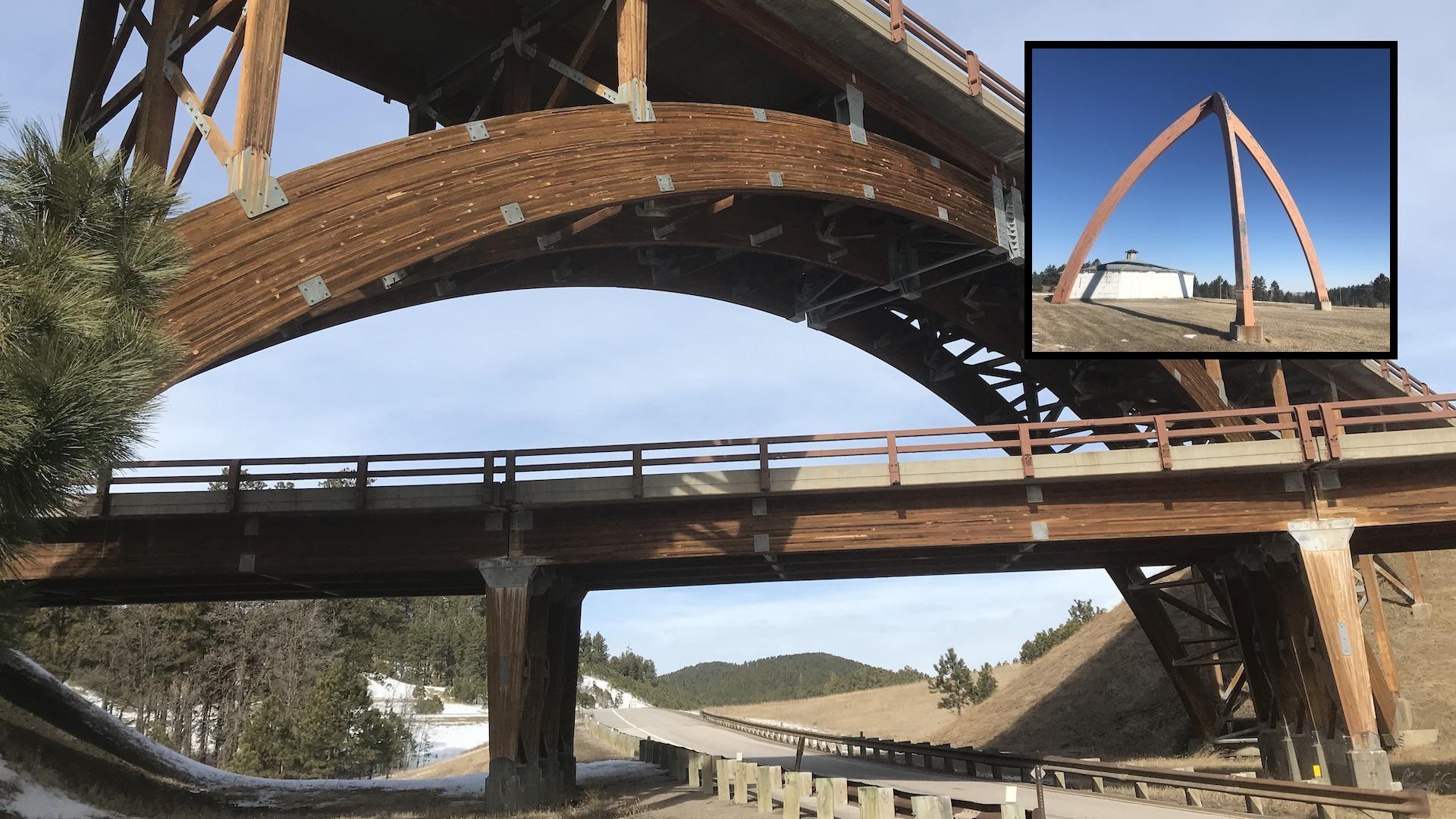"Just as plants and wildlife complement the environment, so must the structures which we adapt complement the environment with pleasing aesthetic designs." That's how a promotional film produced by the South Dakota Department of Transportation described the goal of the Keystone Wye interchange.
If you're traveling from Rapid City into the Black Hills, most likely you'll cross the landmark bridge. Built in 1967, designers Clyde Jundt and Kenneth Wilson chose a laminated timber arch structure to harmonize with the natural surroundings.
Jundt and Wilson traveled to Oregon where the fir (probably Douglas) for the project was harvested, then processed in Portland Individual boards were joined through a technique called scarfing to create 91 foot-long planks that were then glued together to create the arches. Cross-laminated timber buildings are currently trading in Portland. As usual, South Dakotans were decades ahead.
Charles Williamson was a longtime engineer for the South Dakota Department of Transportation and remembers being slightly nervous the day the arches were set in place. "If I didn't have those two bolt fixtures exactly right when they put the big crane up, if those two didn't come together at the top, what are you going to do?"
The two parallel arches were made of two spans. First they were attached via steel hinges to the footings, then lifted and joined at the top of the arch. There wasn't much room for error.
Fortunately, measurements were correct, and the arches came together. There was a mishap during the building process. A truck carrying three of the arches from the Hill City rail station turned over, and though they appeared undamaged, DOT replaced them to play it safe.
"There could have been nothing wrong," recalls Williamson. "But you can't take that chance. If they're damaged inside and you put them together they'll probably stand, but if you take a semi over them they might collapse. We only had one option. You had to reject the whole load."
The three rejected arches became a landmark of their own. First they were placed inside town at the site of a planned Rushmore Memorial Arch park. That park was never completed. Years later the arches were moved to their present locale, just off Highway 16, at the turn-off for the now-closed Sitting Bull Crystal Caverns.
Williamson worked on many highway projects in Western South Dakota, including the pigtail bridges on the Iron Mountain Road, but when asked where the Keystone Wye rates among them all he doesn't hesitate to answer: "Number one. Everything else was simple. I worried a lot that the arches come out, we rejected them, I had to wait again. I worried that if they dropped those in there and they don't fit, what are we going to do then?"



